Abstract
The basic hydrodynamic equations governing transport in submicron pores are reexamined. Conditions necessary for a simplified, one-dimensional treatment of the diffusion/convection process are established. Steric restrictions and Brownian motion are incorporated directly into the resulting model. Currently available fluid mechanical results are used to evaluate an upper limit on hindered diffusion; this limit is valid for small particle-to-pore ratios. Extensions of the analysis are shown to depend on numerical solutions of the related hydrodynamic problem, that of asymmetrical particle motion in a bounded fluid.
Full text
PDF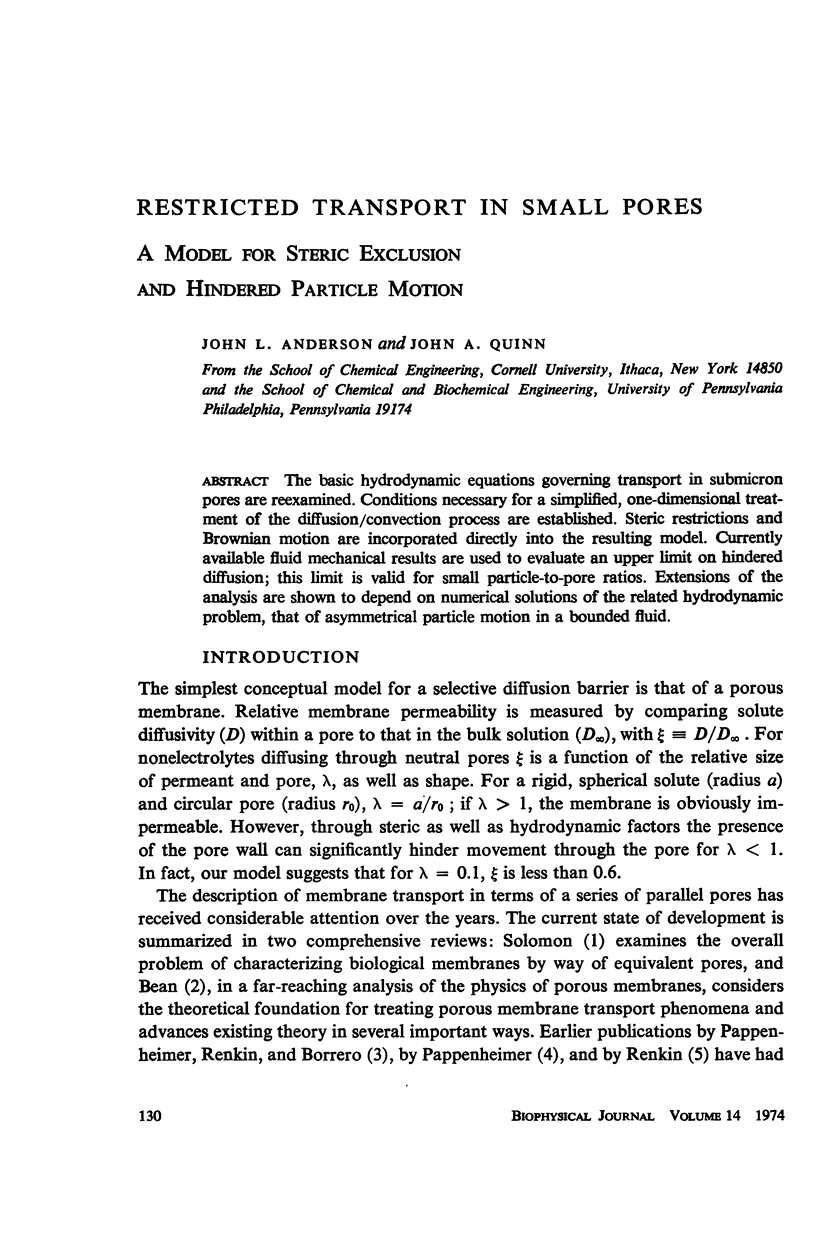
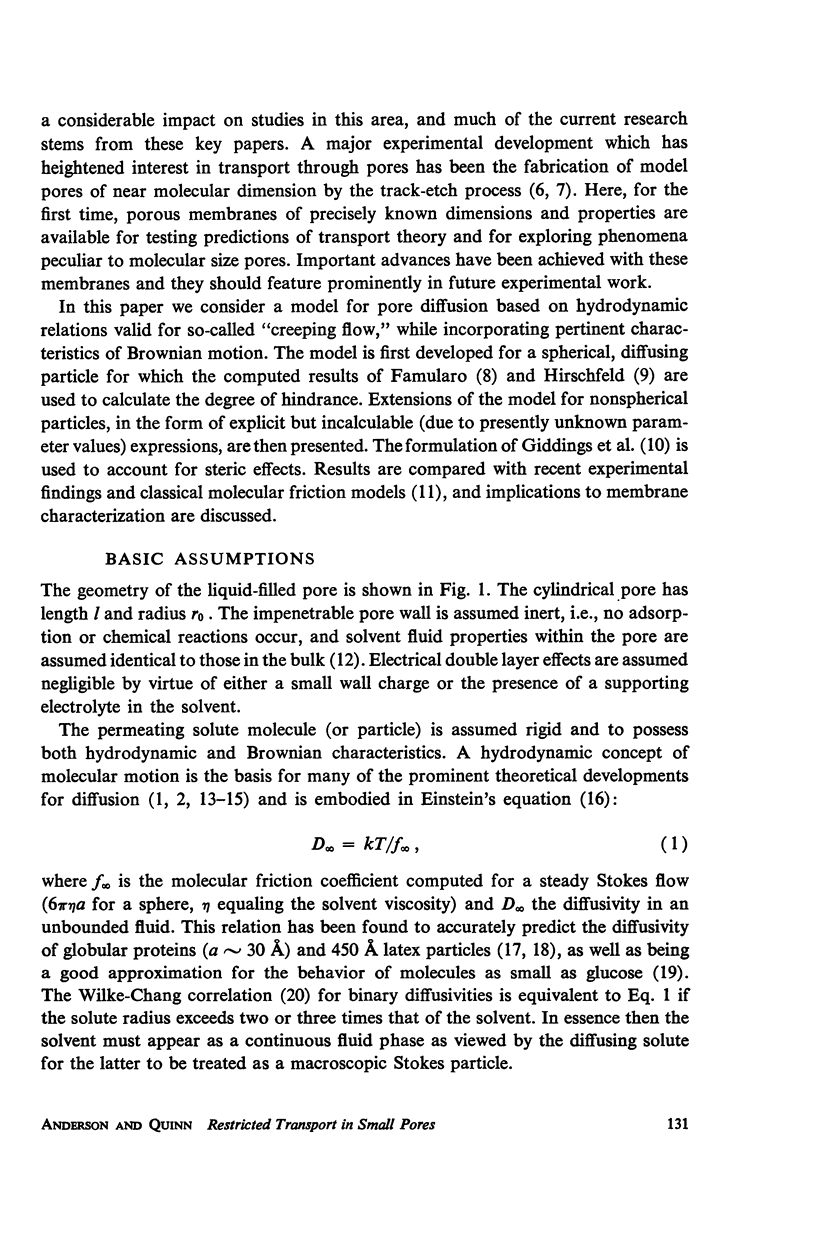
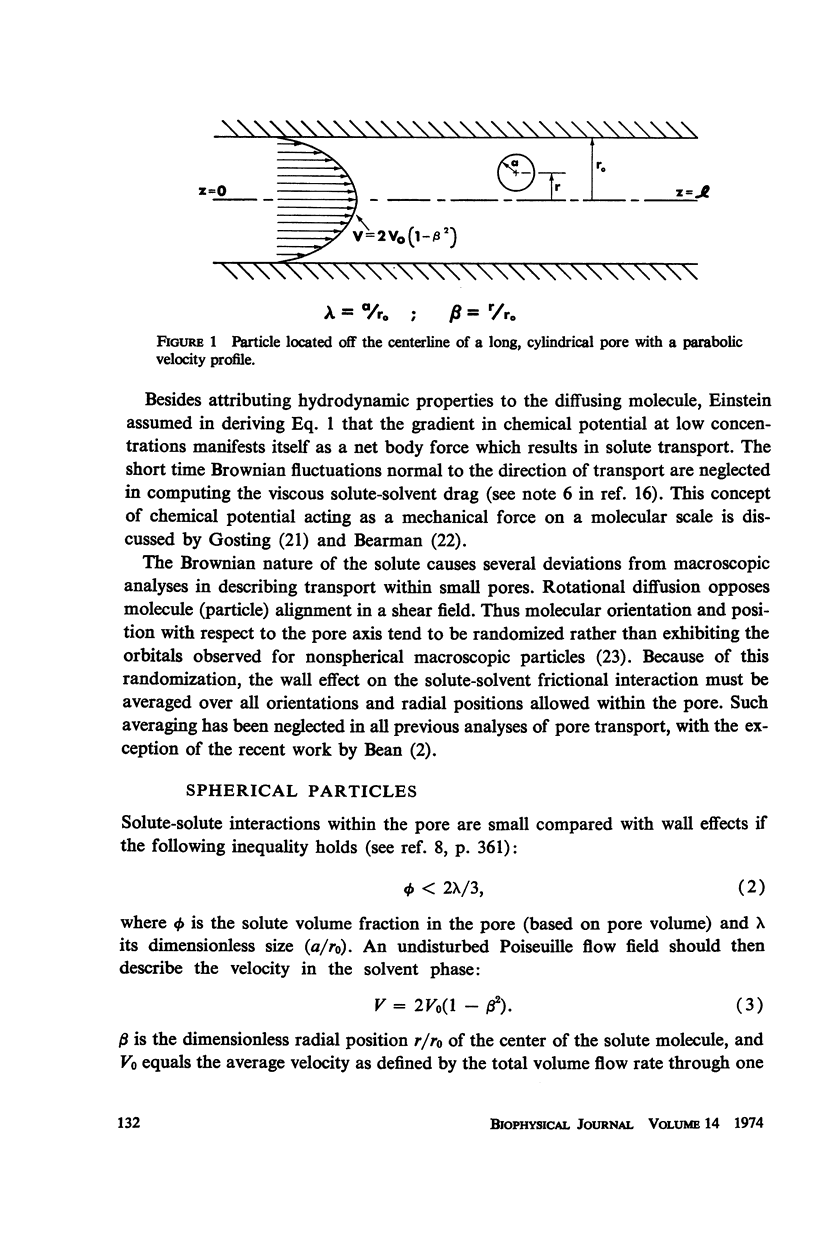
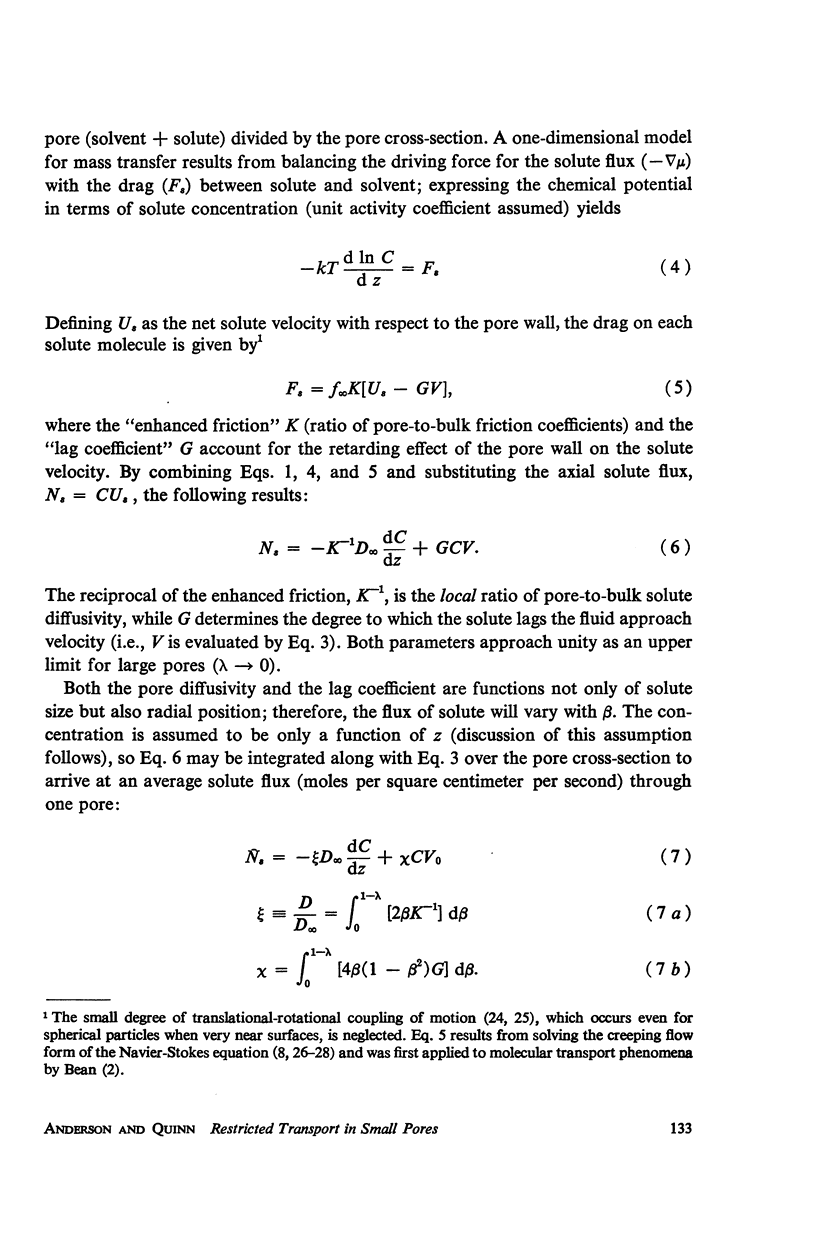
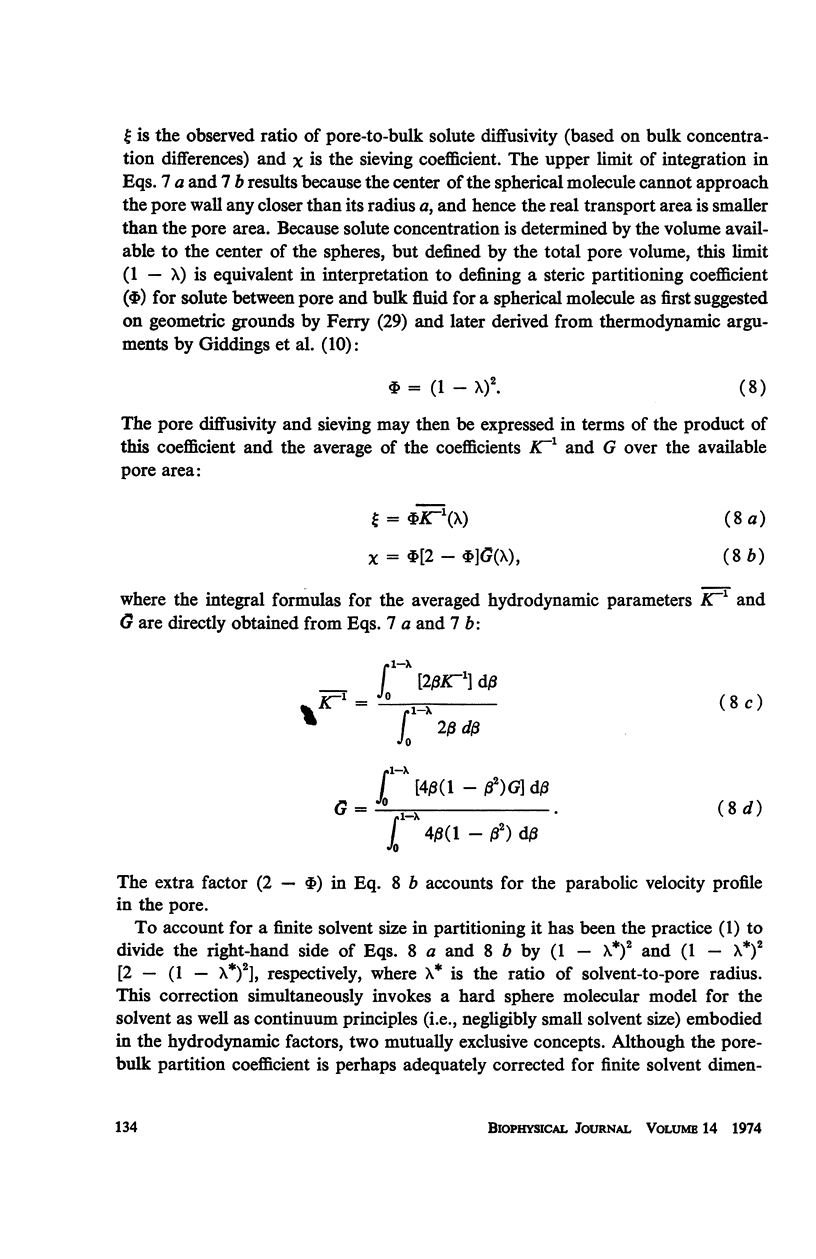
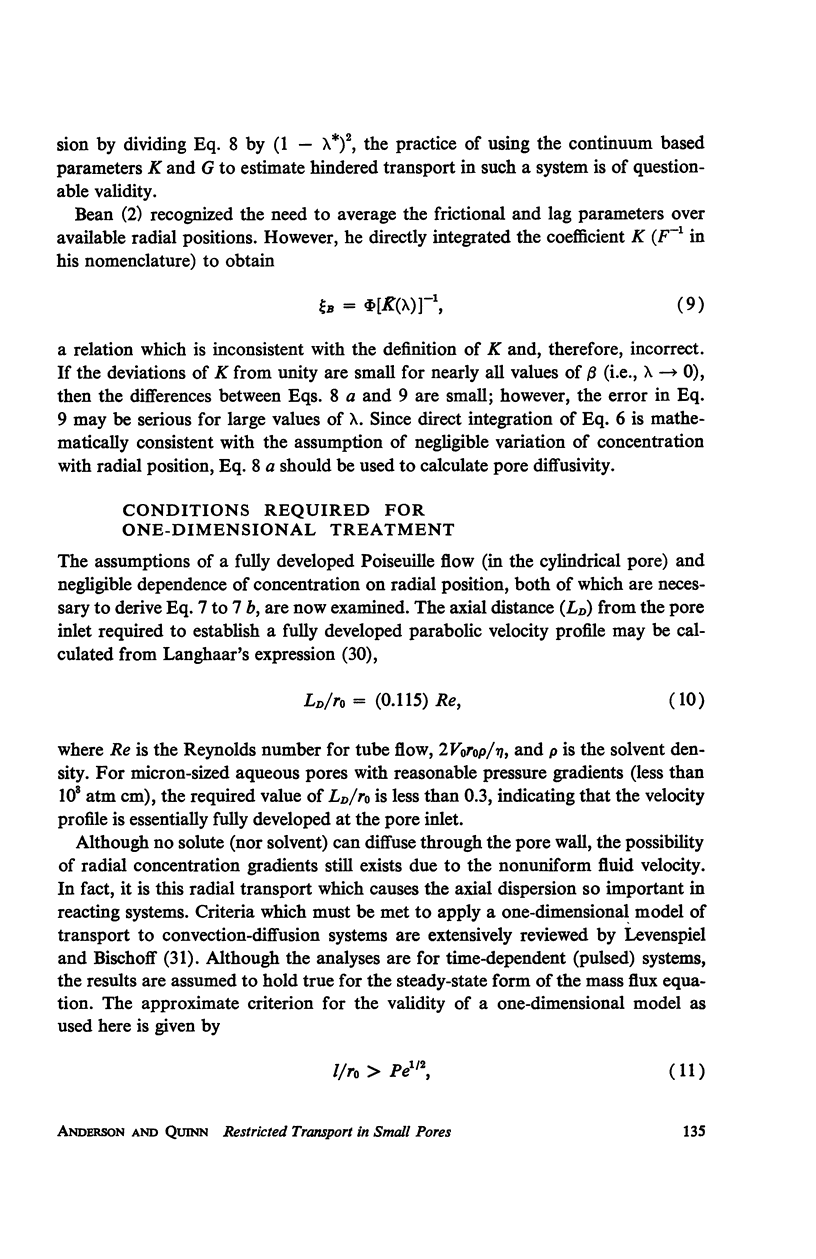
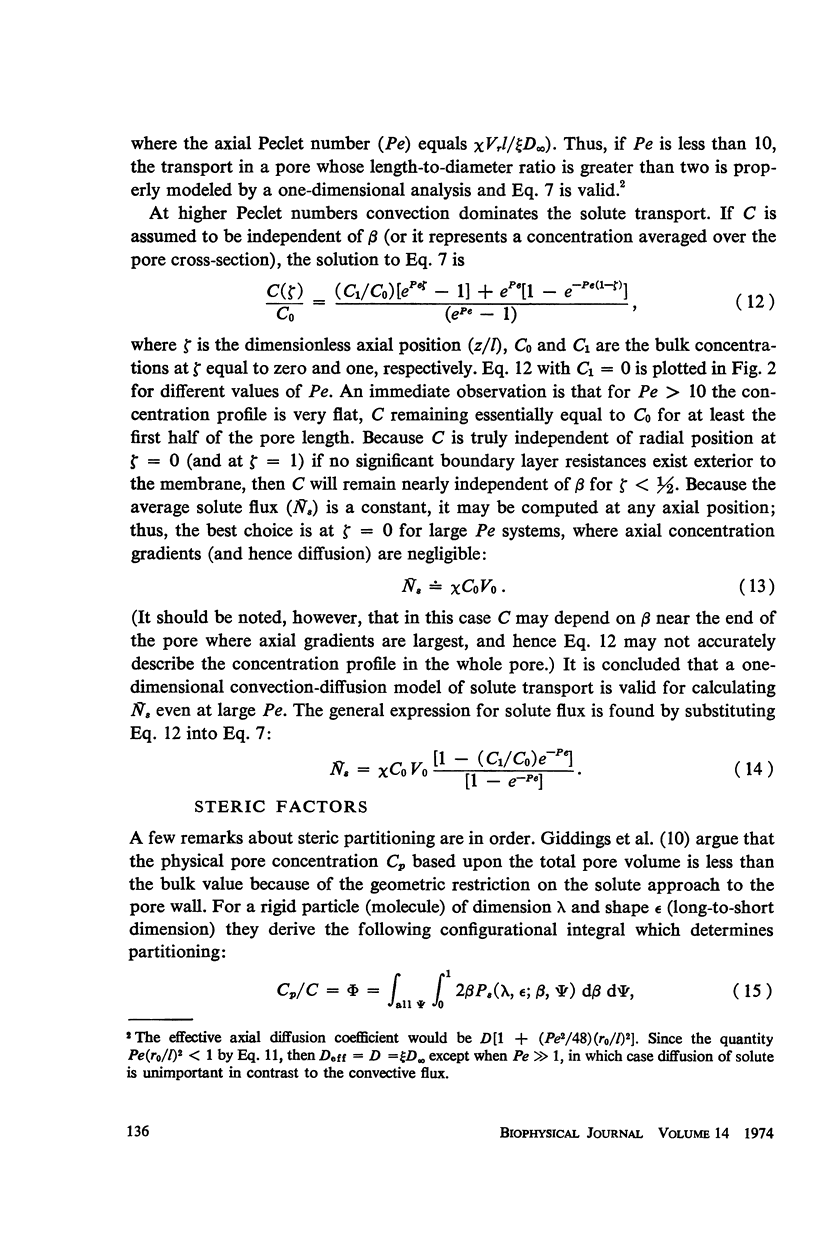
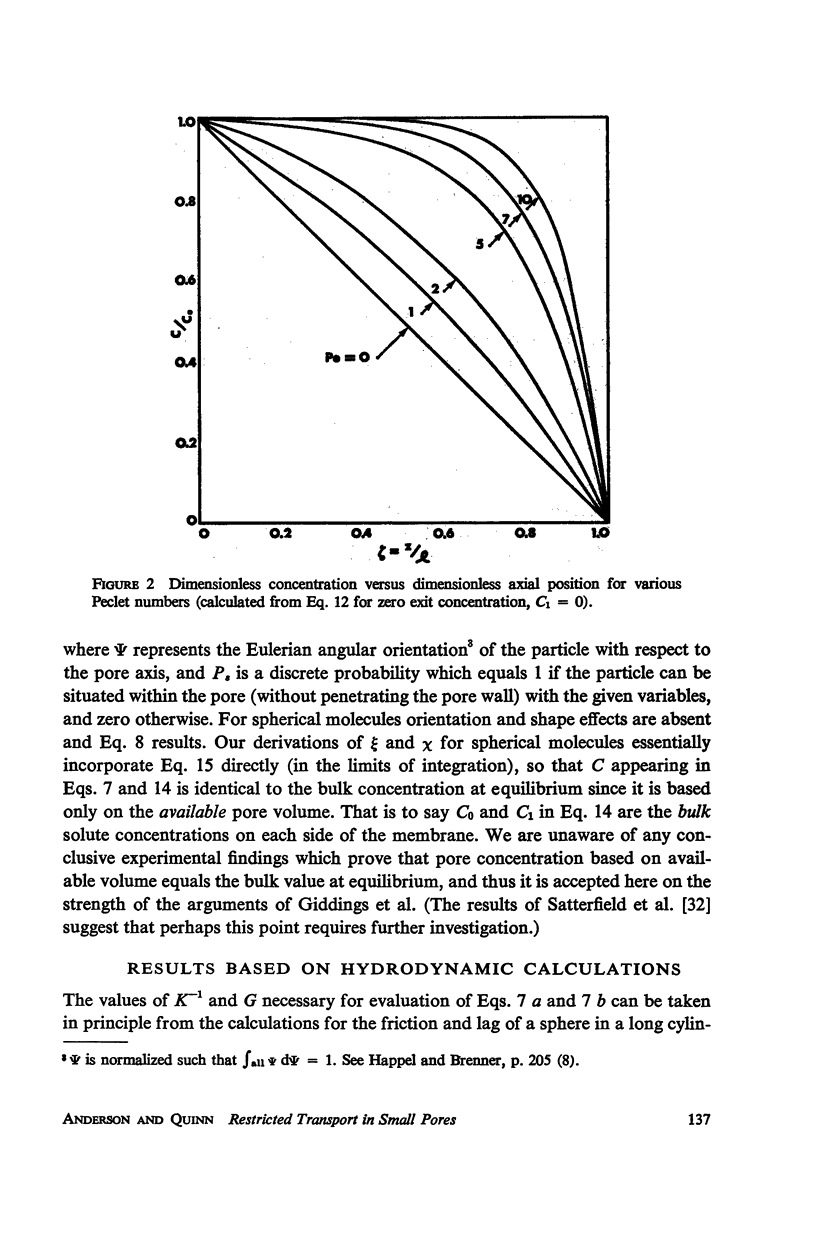
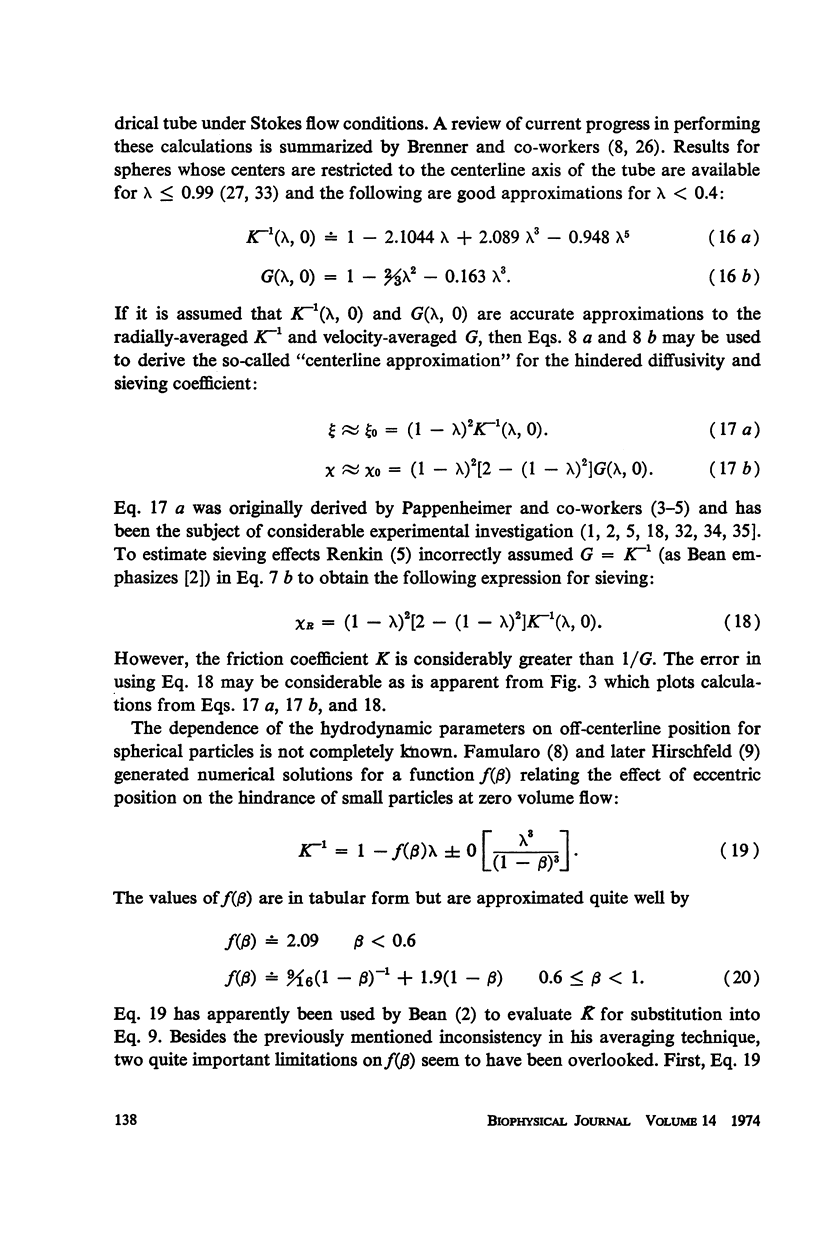
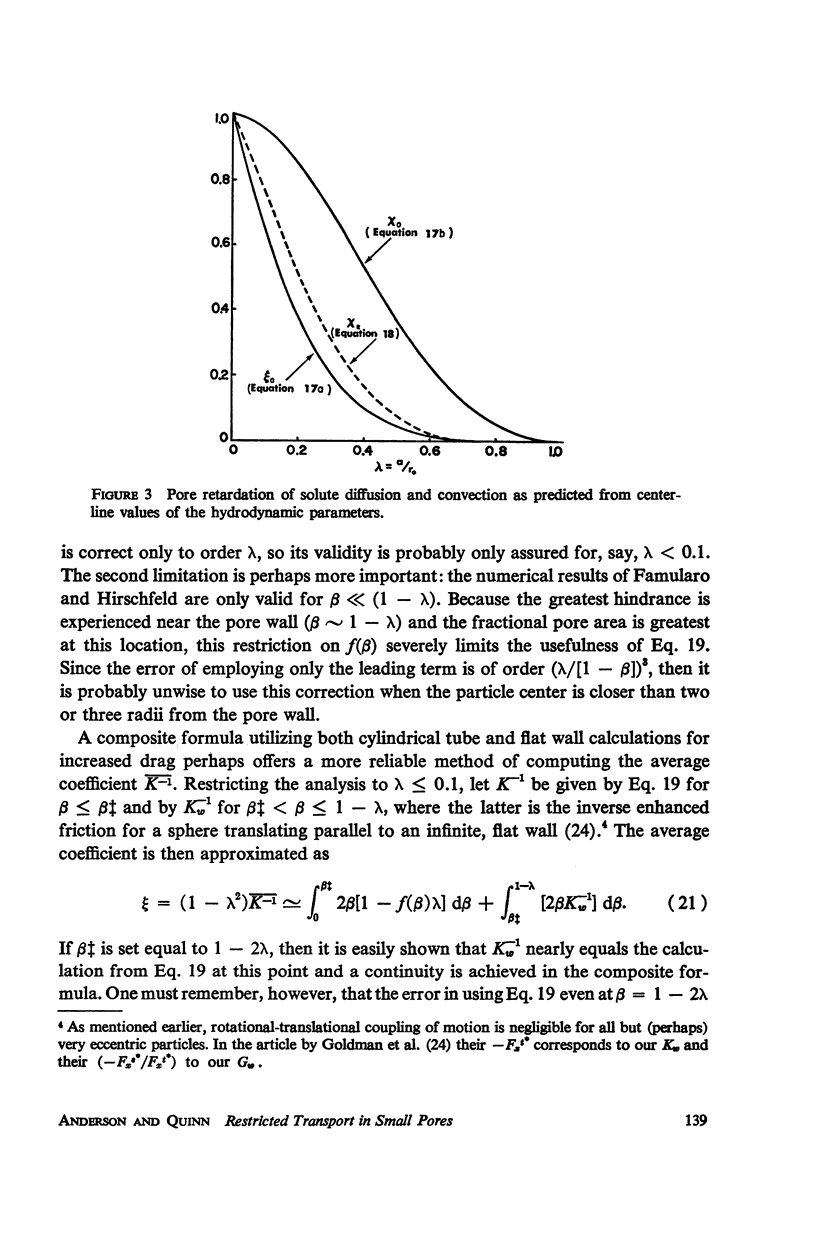
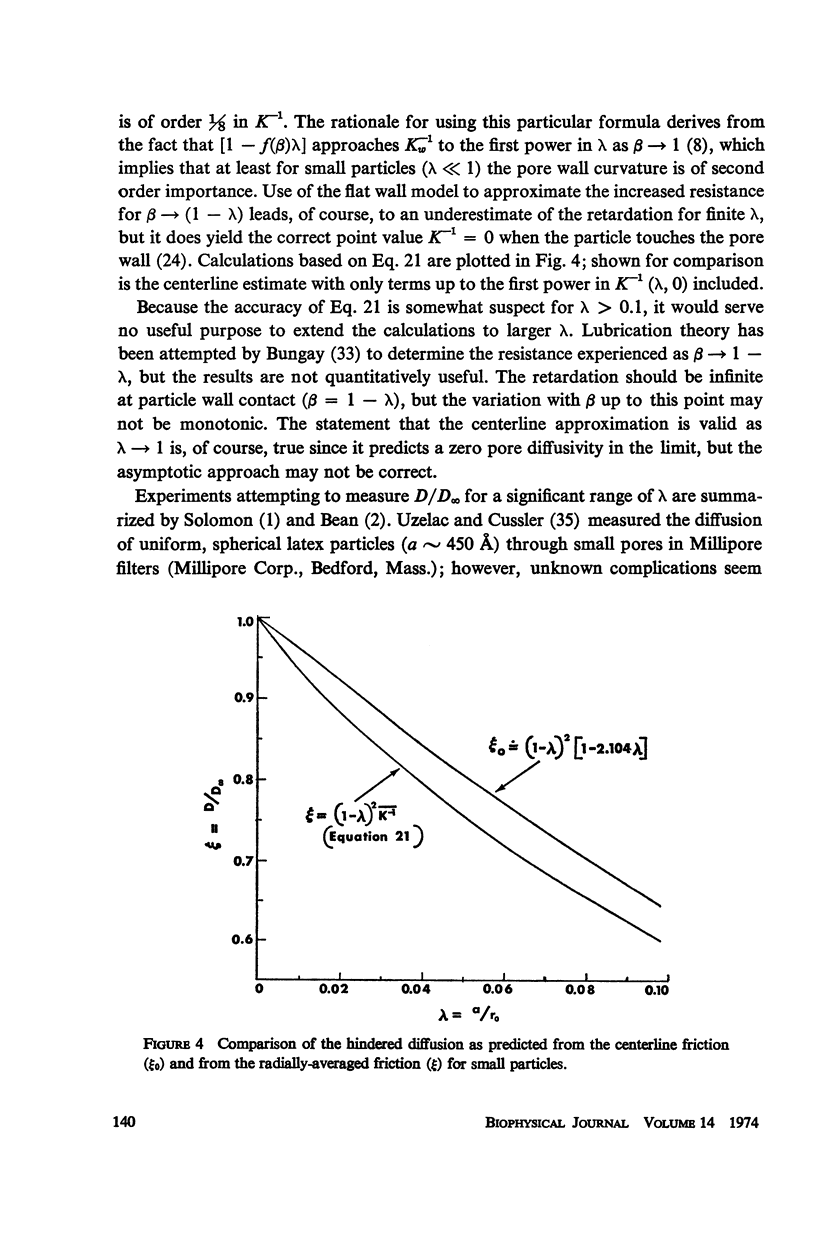
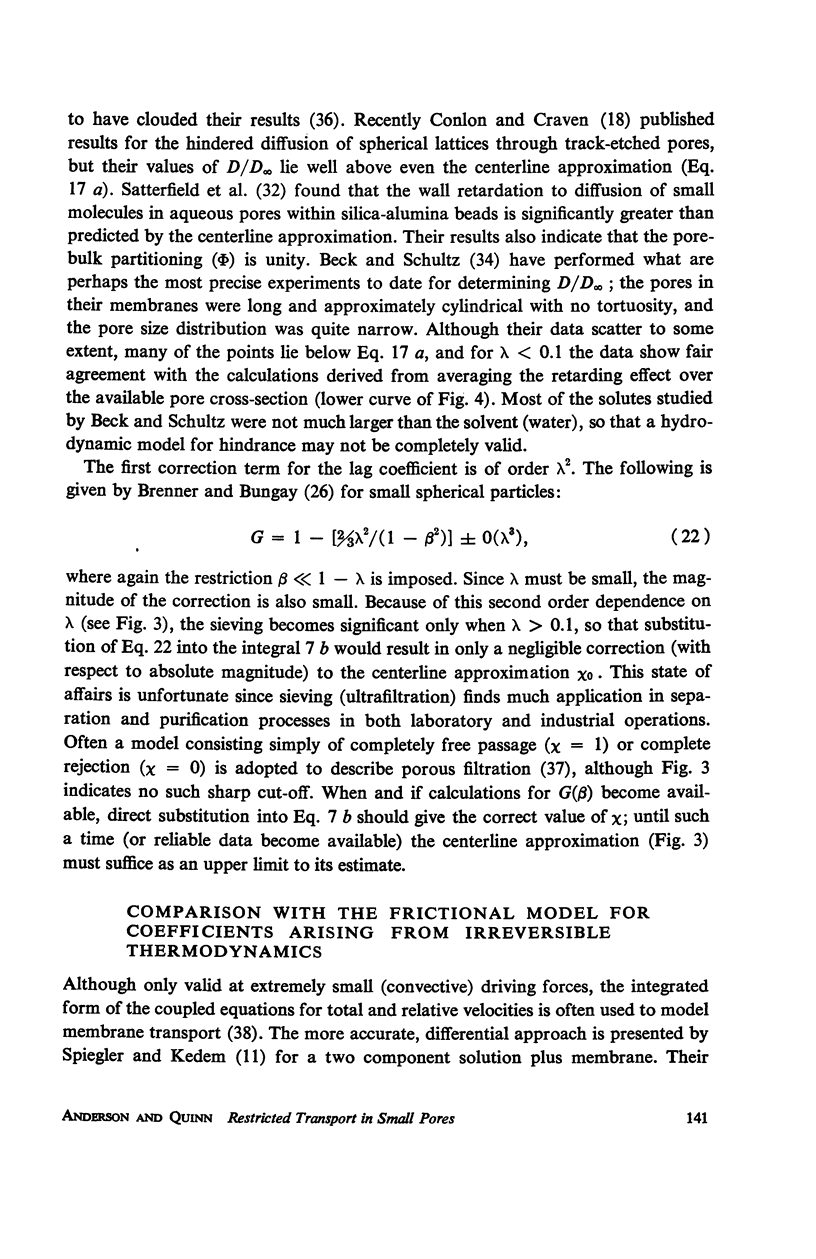
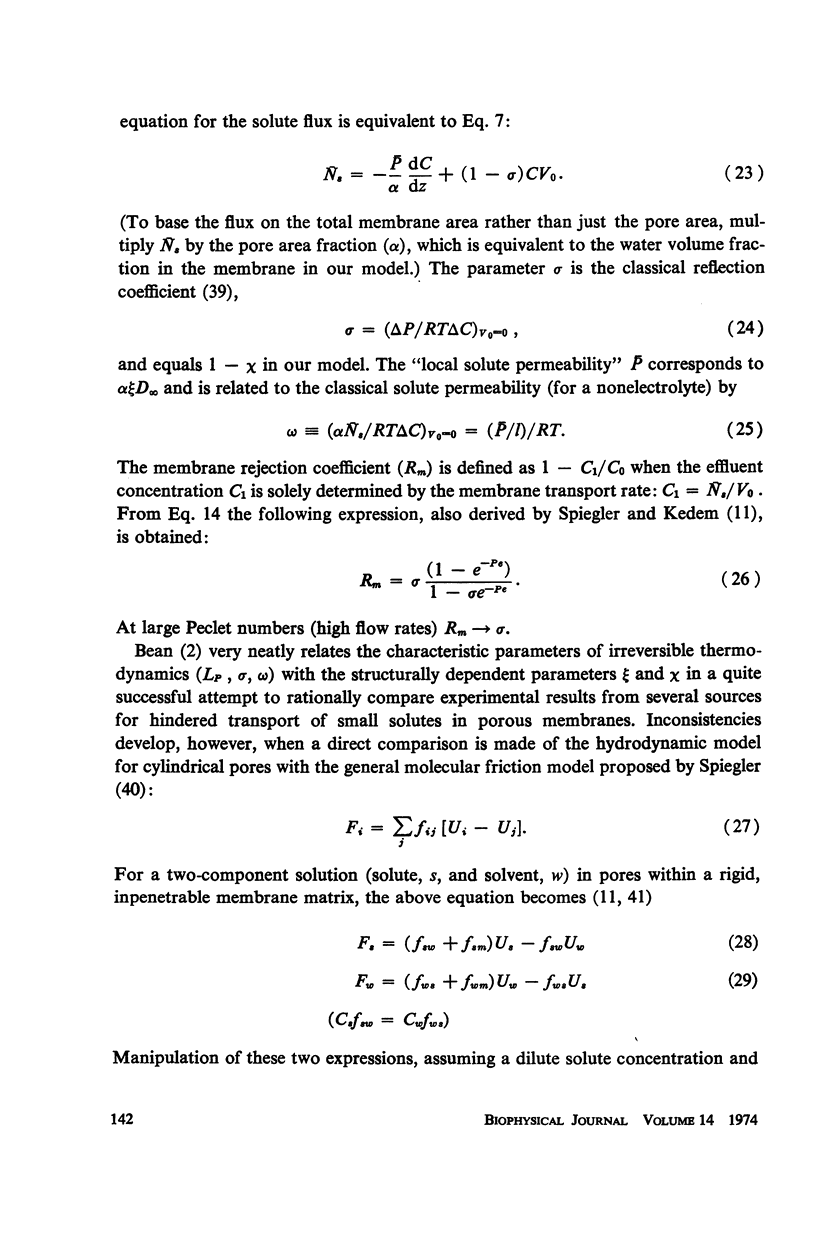
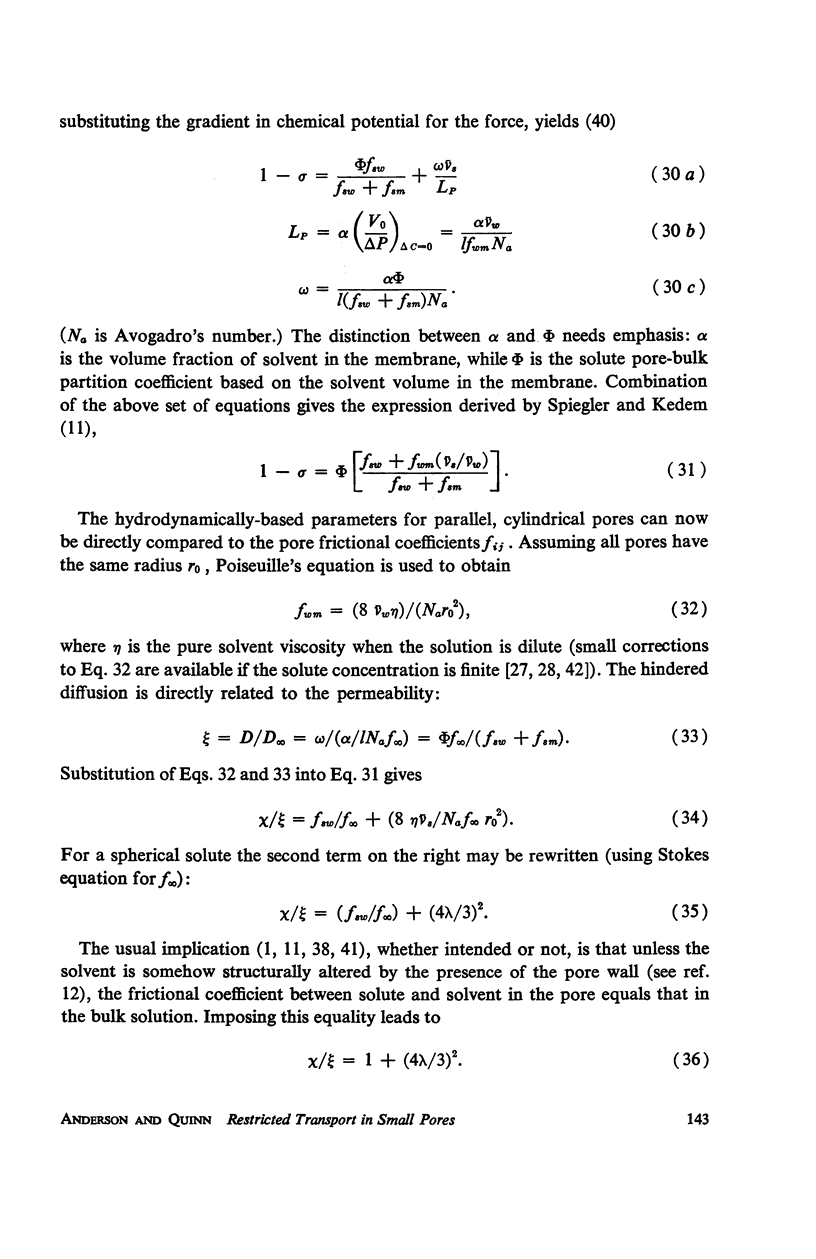
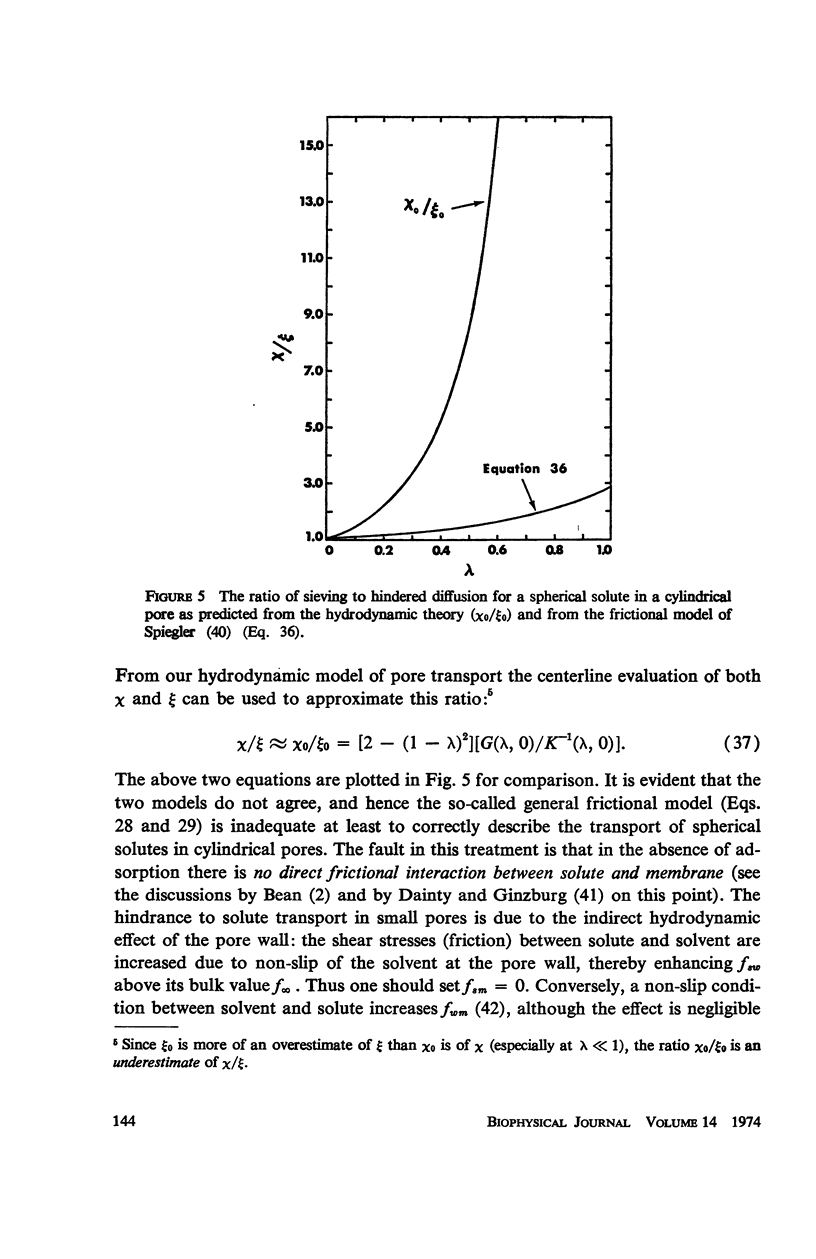
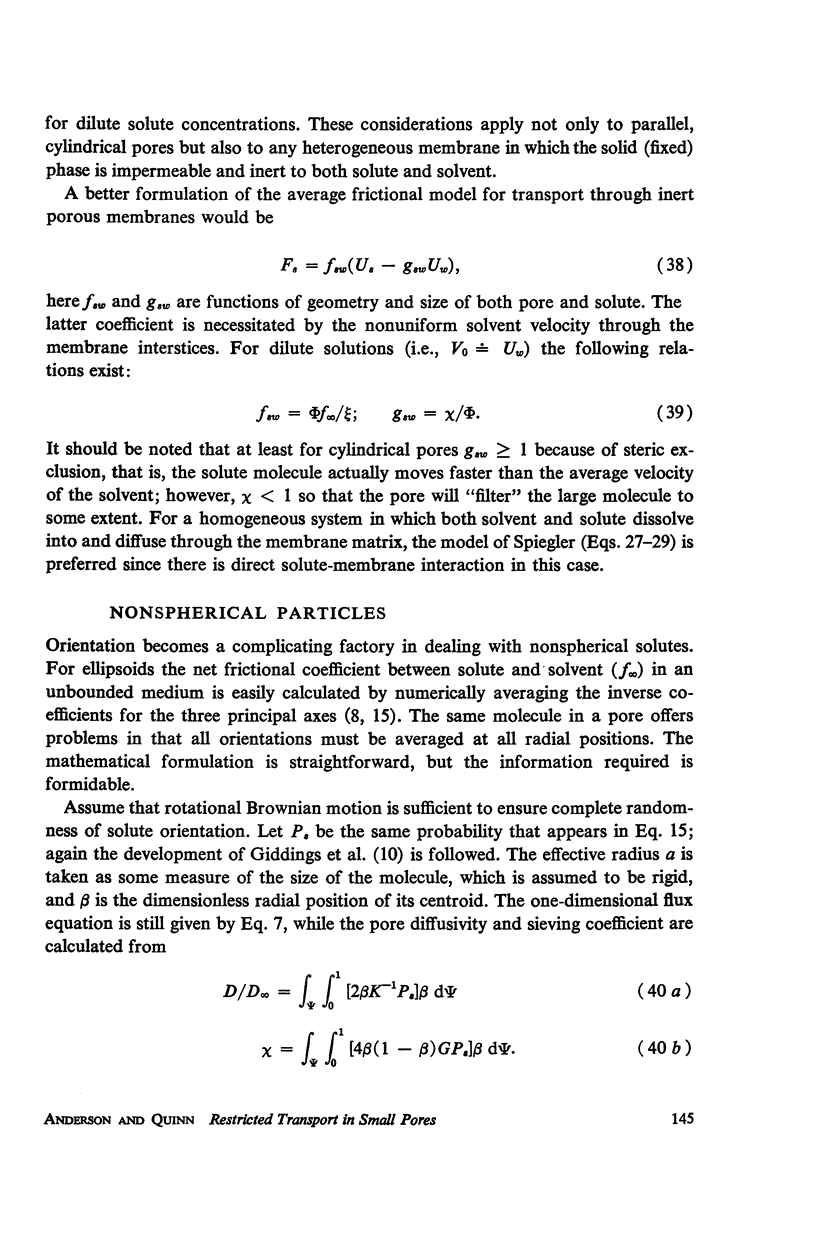
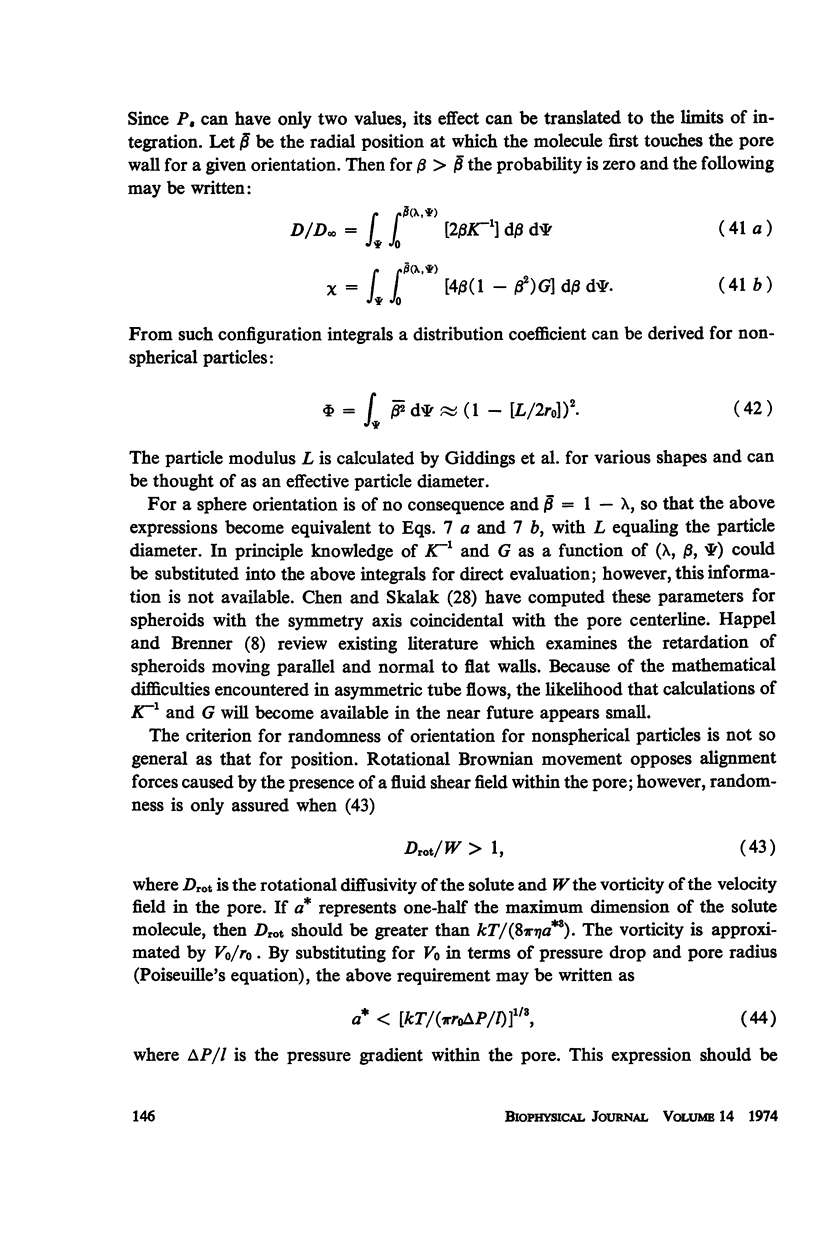
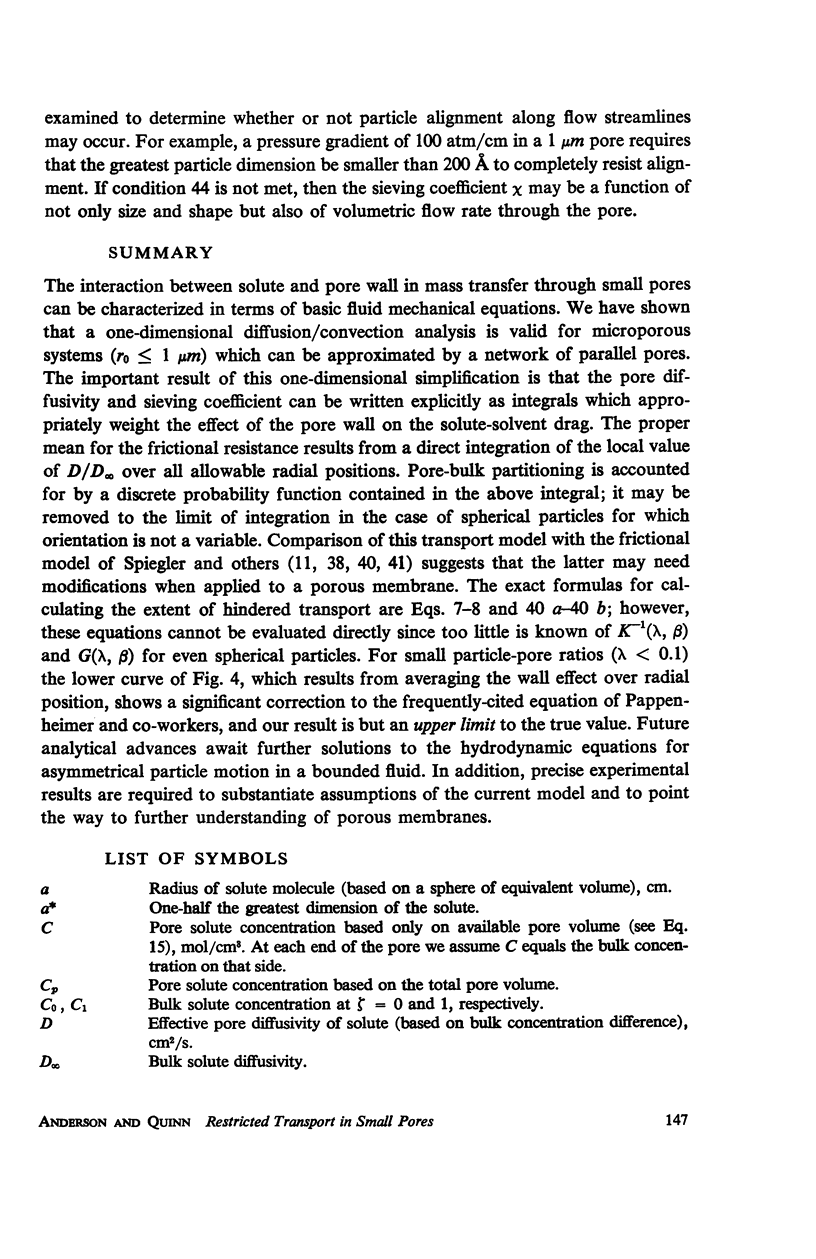
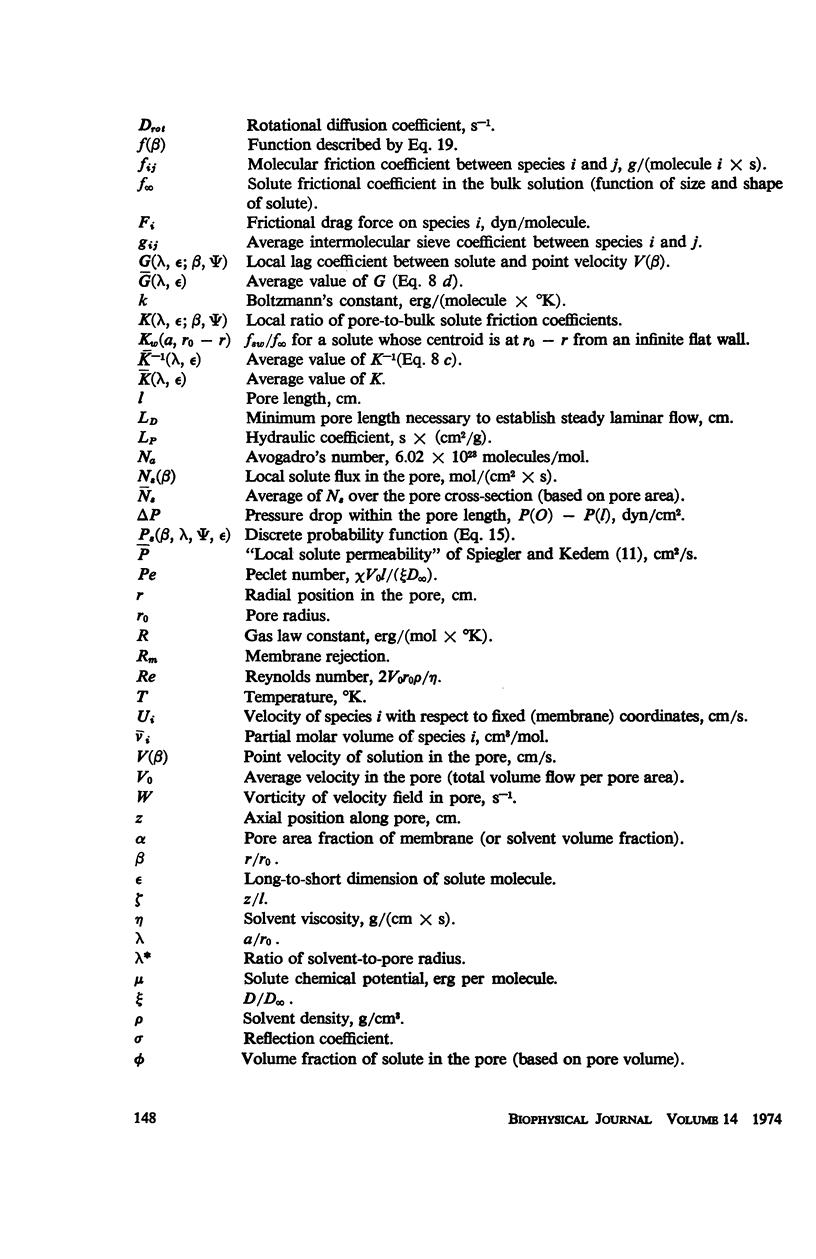
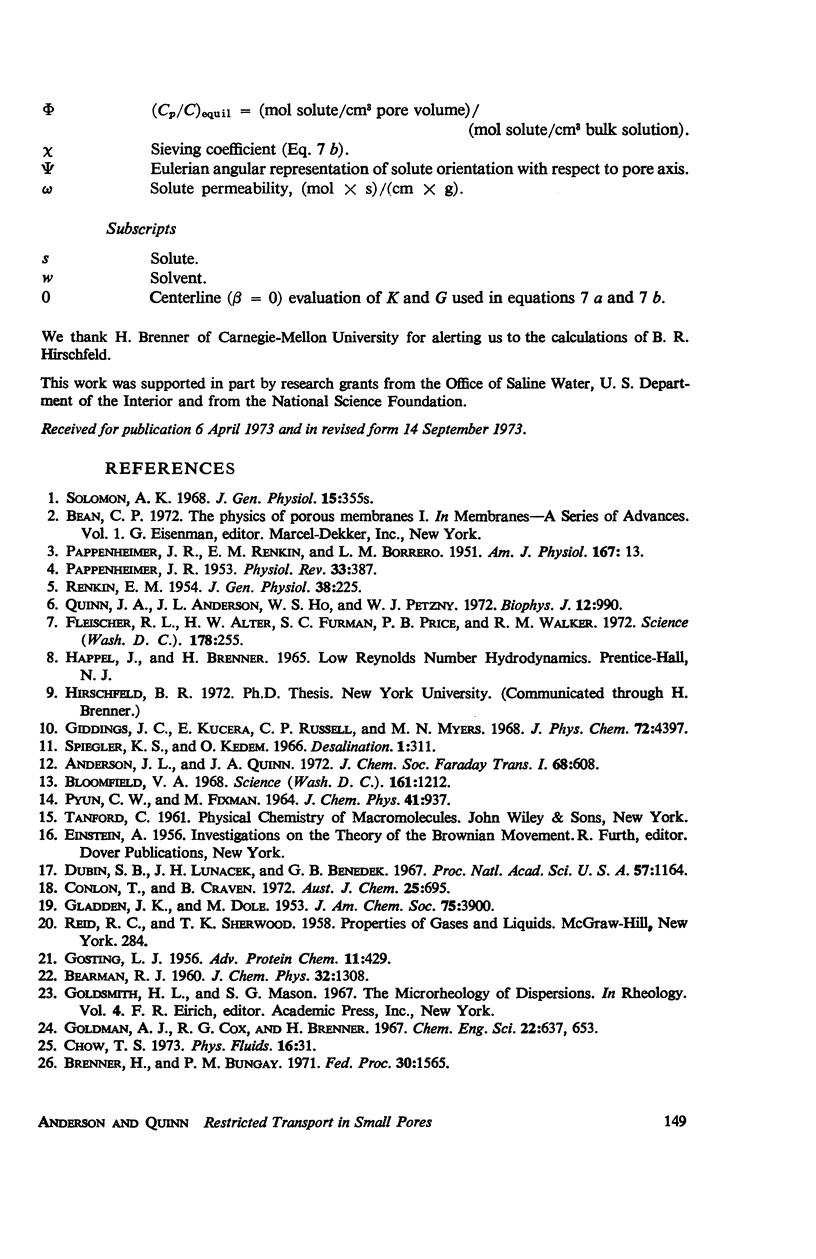
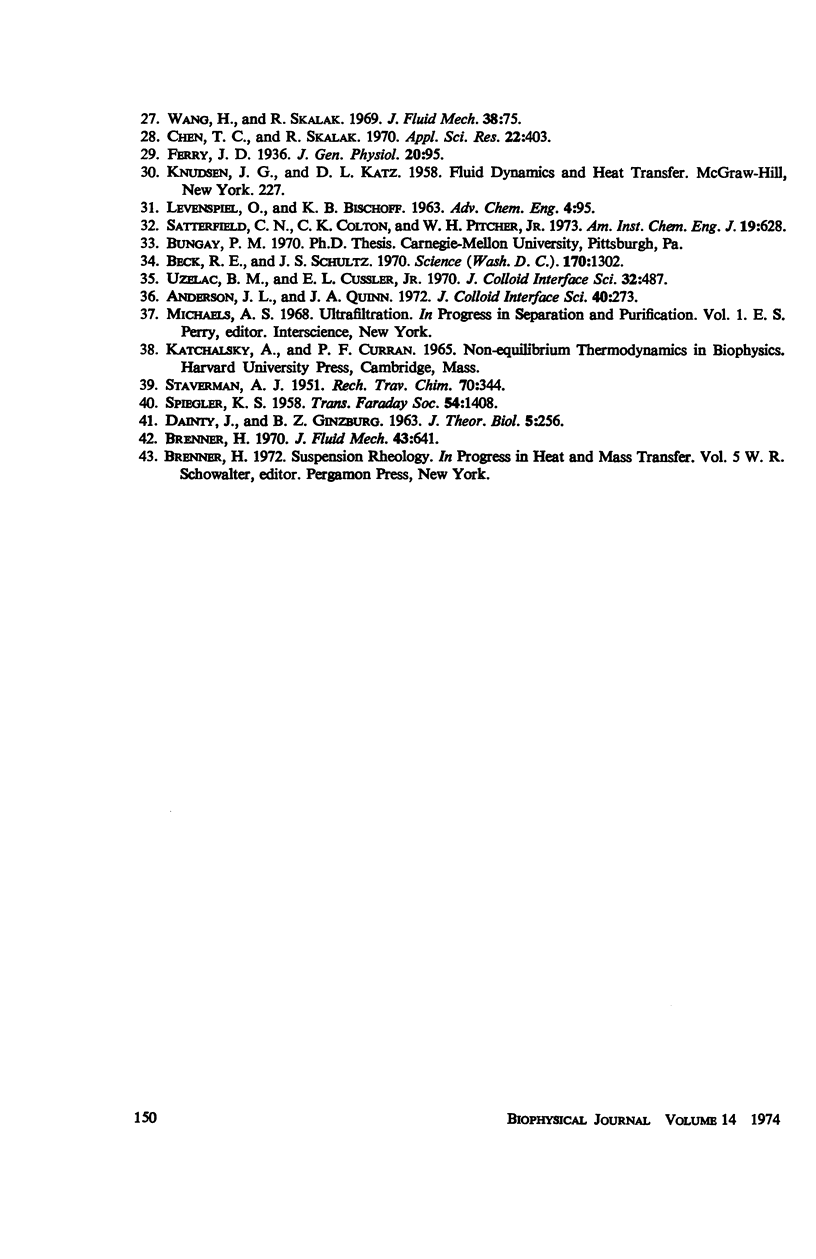
Selected References
These references are in PubMed. This may not be the complete list of references from this article.
- Brenner H., Bungay P. M. Rigid-particle and liquid-droplet models of red cell motion in capillary tubes. Fed Proc. 1971 Sep-Oct;30(5):1565–1577. [PubMed] [Google Scholar]
- Dainty J., Ginzburg B. Z. Irreversible thermodynamics and frictional models of membrane processes, with particular reference to the cell membrane. J Theor Biol. 1963 Sep;5(2):256–265. doi: 10.1016/0022-5193(63)90063-8. [DOI] [PubMed] [Google Scholar]
- Dubin S. B., Lunacek J. H., Benedek G. B. Observation of the spectrum of light scattered by solutions of biological macromolecules. Proc Natl Acad Sci U S A. 1967 May;57(5):1164–1171. doi: 10.1073/pnas.57.5.1164. [DOI] [PMC free article] [PubMed] [Google Scholar]
- Fleischer R. L., Alter H. W., Furman S. C., Price P. B., Walker R. M. Particle track etching. Science. 1972 Oct 20;178(4058):255–263. doi: 10.1126/science.178.4058.255. [DOI] [PubMed] [Google Scholar]
- GOSTING L. J. Measurement and interpretation of diffusion coefficients of proteins. Adv Protein Chem. 1956;11:429–554. doi: 10.1016/s0065-3233(08)60425-8. [DOI] [PubMed] [Google Scholar]
- PAPPENHEIMER J. R. Passage of molecules through capillary wals. Physiol Rev. 1953 Jul;33(3):387–423. doi: 10.1152/physrev.1953.33.3.387. [DOI] [PubMed] [Google Scholar]
- PAPPENHEIMER J. R., RENKIN E. M., BORRERO L. M. Filtration, diffusion and molecular sieving through peripheral capillary membranes; a contribution to the pore theory of capillary permeability. Am J Physiol. 1951 Oct;167(1):13–46. doi: 10.1152/ajplegacy.1951.167.1.13. [DOI] [PubMed] [Google Scholar]
- Quinn J. A., Anderson J. L., Ho W. S., Petzny W. J. Model pores of molecular dimension. The preparation and characterization of track-etched membranes. Biophys J. 1972 Aug;12(8):990–1007. doi: 10.1016/S0006-3495(72)86139-3. [DOI] [PMC free article] [PubMed] [Google Scholar]
- RENKIN E. M. Filtration, diffusion, and molecular sieving through porous cellulose membranes. J Gen Physiol. 1954 Nov 20;38(2):225–243. [PMC free article] [PubMed] [Google Scholar]


